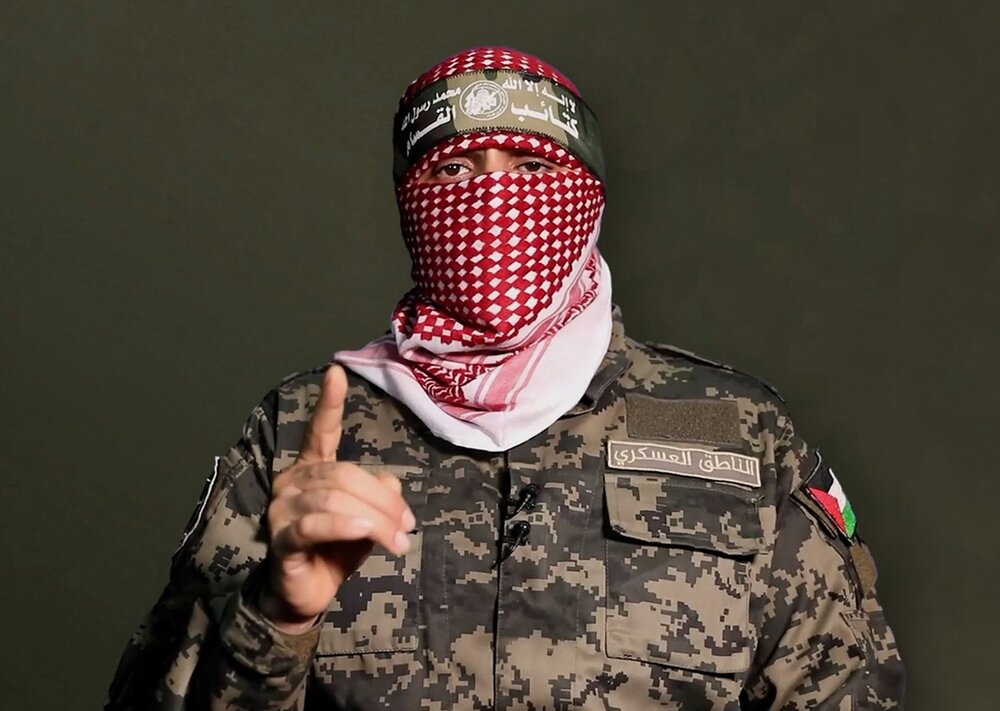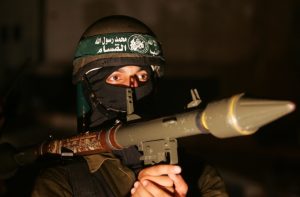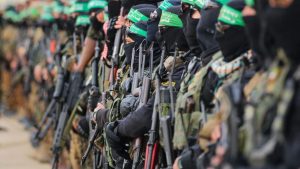Qassam and his recent ambushes represent a stark and persistent reality of the ongoing conflict in Gaza, showcasing the military wing of Hamas’s enduring capacity to inflict significant damage on a far superior conventional force.
These meticulously planned operations, exploiting the dense urban terrain and leveraging asymmetric tactics, continue to challenge the Israel Defense Forces (IDF) despite overwhelming Israeli technological and firepower advantages.
The frequency and sophistication of these attacks underscore a dynamic and evolving threat, rooted in deep local knowledge, extensive tunnel networks, and an ever-adapting arsenal of improvised and conventional weapons.
Understanding the nature of Qassam and his recent ambushes is crucial to grasping the tactical complexities of warfare in Gaza and the strategic calculus of both sides in this protracted struggle.
Qassam and His Recent Ambushes
Emerging from the crucible of the First Intifada in the early 1990s, the Izz ad-Din al-Qassam Brigades (IQB) were established as the armed wing of Hamas.
Named after a Syrian preacher who fought British rule in Mandatory Palestine, the Brigades evolved from small cells using rudimentary weapons into a highly organized paramilitary force.
Decades of conflict, coupled with the constraints of the Israeli-Egyptian blockade, fostered remarkable ingenuity. The IQB developed extensive capabilities in tunnel warfare (the “Gaza Metro”), locally manufactured rockets (the Qassam series being the earliest), mortars, and increasingly sophisticated improvised explosive devices (IEDs).
Their stated mission remains the “armed resistance” against Israeli occupation and the establishment of an Islamic state in historic Palestine, viewing military action as a necessary and legitimate tool alongside political and social activities.
This foundation directly informs the planning and execution of Qassam and his recent ambushes. you can read more about this topic here.
The Anatomy of an Ambush: Core Tactics of the Qassam Brigades
The ambush is the cornerstone of IQB tactics, designed specifically to negate the IDF’s advantages in firepower, technology, and air superiority.
These operations are not random acts of violence but complex, multi-layered engagements involving months of planning, preparation, and intelligence gathering. Key elements consistently observed in Qassam and his recent ambushes include:
- Intelligence & Reconnaissance: Extensive surveillance of IDF patrol routes, routines, and vulnerabilities using human intelligence (local informants), visual observation from hidden positions, and increasingly, commercial drones.
- Battlefield Preparation: Rigging kill zones with interconnected IEDs (buried under roads, hidden in walls, placed in rubble), pre-sighting RPG and sniper positions within buildings, and preparing escape routes via tunnels or concealed pathways. Buildings are often booby-trapped.
- Deception and Camouflage: Fighters blend into the environment, often wearing civilian clothing until the moment of attack. IDF uniforms have been used in some complex operations for initial deception. Decoy fighters or explosive devices lure forces into traps.
Multi-Vector Attacks: Ambushes rarely rely on a single element. Coordinated strikes typically combine:
- IED detonations to disable lead vehicles or disorient troops.
- Intense small arms fire (AK-47s, PKM machine guns) from multiple, concealed positions.
- Rocket-Propelled Grenade (RPG) fire, particularly against armored vehicles.
- Sniper fire targeting officers or key personnel.
- Secondary IEDs to target responders and reinforcements.
Exploitation of Urban Terrain: Gaza’s dense cityscapes – narrow alleyways, multi-story buildings, and vast rubble fields – provide ideal cover for ambushers. It limits IDF sightlines, hinders vehicle maneuverability, and complicates air support. Fighters use interconnected buildings and tunnels to appear, strike, and vanish quickly.
Tunnel Warfare Integration: Underground networks are not just for smuggling or command centers; they are integral to ambush tactics. Fighters emerge unexpectedly from hidden shafts behind or amidst IDF units, launch attacks, and retreat underground before effective counter-fire can be deployed.
Case Studies: Dissecting Recent Qassam Ambushes (2023-2024)
The intense ground operations following October 7th, 2023, have seen a surge in complex ambushes, demonstrating the IQB’s adaptation under extreme pressure:
The Shejaiya Meat Grinder (December 2023)
In this densely populated eastern Gaza City neighborhood, IQB fighters lured an IDF armored column into a narrow street network meticulously prepared over weeks.
A massive, coordinated IED detonation beneath the lead D9 bulldozer and trailing Namer APC immobilized the convoy.
Immediately, heavy machine gun and RPG fire rained down from pre-sighted positions in surrounding buildings on multiple floors.
Snipers targeted dismounted soldiers seeking cover.
The intense close-quarters battle raged for hours, requiring significant IDF reinforcements and close air support to extract the pinned-down unit, resulting in substantial Israeli casualties.
This operation exemplified the lethal synergy of terrain, preparation, and coordinated fires central to Qassam and his recent ambushes.
The Khan Younis Tunnel Ambush (January 2024)
After IDF engineers breached a tunnel shaft assessed as significant, a specialized unit entered for clearance. Deep within the network, they were met not with an empty passage, but a deadly reception force.
IQB fighters, concealed in side tunnels and camouflaged niches, detonated directional charges (EFPs – Explosively Formed Penetrators) at point-blank range.
Close-quarters gunfire erupted in the confined, dark space, maximizing confusion and casualties.
The ambush exploited the IDF’s inherent vulnerability when operating underground, where technology is limited, and the defenders hold the terrain advantage.
The Bureij Pincer Maneuver (February 2024)
Demonstrating tactical complexity, IQB fighters launched a coordinated assault on an IDF company headquarters established in a multi-story building.
Initial attacks came from adjacent structures using RPGs and machine guns, drawing the defenders’ focus and fire.
Simultaneously, a separate IQB cell emerged from a concealed tunnel exit behind the IDF position. This second force attacked the building’s rear and lower floors, catching the IDF in a devastating crossfire (“pincer”).
The surprise attack from an unexpected vector caused significant disruption and losses before the IDF could consolidate its defense and call in overwhelming support.
The operation highlighted sophisticated command, control, and timing.
Drone Integration in Northern Gaza (Ongoing)
Qassam and his recent ambushes increasingly incorporate commercially available and locally modified drones. These are used for real-time surveillance to track IDF movements and set ambush triggers.
More significantly, they are weaponized: small explosive charges are dropped precisely onto armored vehicle hatches, exposed infantry positions, or even groups of soldiers taking cover.
Quadcopters provide a low-cost, hard-to-intercept aerial dimension, adding a layer of persistent threat above ground forces.
Technological Adaptation: The Homegrown Arsenal
Operating under blockade has forced the IQB to become remarkably resourceful. Their technological development directly enhances ambush lethality:
Rockets & Mortars
While primarily used for area bombardment and psychological effect, barrages sometimes precede or coincide with ground ambushes to pin down reinforcements or target rear echelons.
Continued, though limited, efforts focus on improving range and payload.
Improvised Explosive Devices (IEDs)
The backbone of many ambushes. IQB engineers constantly innovate:
EFPs (Explosively Formed Penetrators): Crude but deadly shaped charges using machined copper liners to create molten jets capable of piercing heavy armor.
Large Caliber IEDs: Utilizing hundreds of kilograms of explosives, often repurposed from unexploded ordnance or smuggled materials, buried deep to target armored vehicles.
Sophisticated Triggering: Remote detonation (cell phones, radio control), victim-operated (pressure plates, tripwires), and command-wire mechanisms.
Concealment: Hiding devices in debris, animal carcasses, walls, and under road surfaces.
Anti-Armor Weapons: Beyond RPGs (RPG-7 variants, tandem-warhead RPG-29s smuggled or copied), the acquisition and use of advanced Russian Kornet laser-guided anti-tank missiles (likely smuggled via tunnels pre-war) have provided a potent long-range capability against Merkava tanks.
Communications: Secure, encrypted communication apps on commercial phones and mesh radio networks are crucial for coordinating complex ambushes in real-time amidst electronic warfare.
IDF Countermeasures and the Enduring Challenge
The IDF employs a multi-layered approach to counter the ambush threat:
Massive Firepower: Pre-emptive artillery, tank fire, and airstrikes on suspected ambush sites or buildings (“banking” structures).
Advanced ISR: Drones (Heron, Hermes), surveillance balloons, and signals intelligence to detect fighters and activity.
Engineering Solutions: Armored D9 bulldozers to clear routes and booby traps, specialized vehicles like the Namer and Eitan APCs offering enhanced protection against IEDs and RPGs.
Tunnel Detection & Destruction: Sensors, specialized units (Yahalom), flooding, and controlled detonations.
Urban Warfare Training: Intensive drills focusing on building clearing, close-quarters combat (CQB), and counter-ambush drills.
Despite these efforts, Qassam and his recent ambushes demonstrate significant ongoing challenges:
Human Cost: Ambushes continue to inflict casualties on IDF troops, impacting morale and public support for the campaign.
Tempo & Initiative: The defender, intimately knowing the terrain and choosing the time and place, often retains the initiative.
Blurred Lines: Gaza’s dense urban environment makes distinguishing fighters from civilians extremely difficult, complicating engagements and causing collateral damage.
Adaptation: The IQB constantly evolves tactics, weaponry, and deception techniques in response to IDF countermeasures. The rapid integration of drones is a prime example.
Tunnel Complexity: Fully mapping and neutralizing the vast, deep tunnel network remains a monumental, perhaps impossible, task.
The Persistent Threat
Qassam and his recent ambushes are not merely tactical setbacks for the IDF; they are emblematic of the fundamental nature of asymmetric warfare in the 21st century.
They highlight how a technologically inferior force, leveraging terrain, local support, ingenuity, and sheer resilience, can impose significant costs on a modern military.
The IQB’s ability to continue launching complex, lethal ambushes deep into a large-scale Israeli ground operation underscores their deep roots in Gaza’s social fabric and their organizational resilience.
While the IDF can achieve tactical victories and destroy infrastructure, the eradication of the ambush threat a tactic as old as warfare itself, refined for the urban jungle remains elusive.
The evolution witnessed in Qassam and his recent ambushes increased coordination, drone warfare, complex tunnel integration suggests this tactic will remain a defining and deadly feature of the conflict in Gaza for the foreseeable future, demanding constant adaptation and incurring a heavy toll on all sides.
source: raialkhalij




